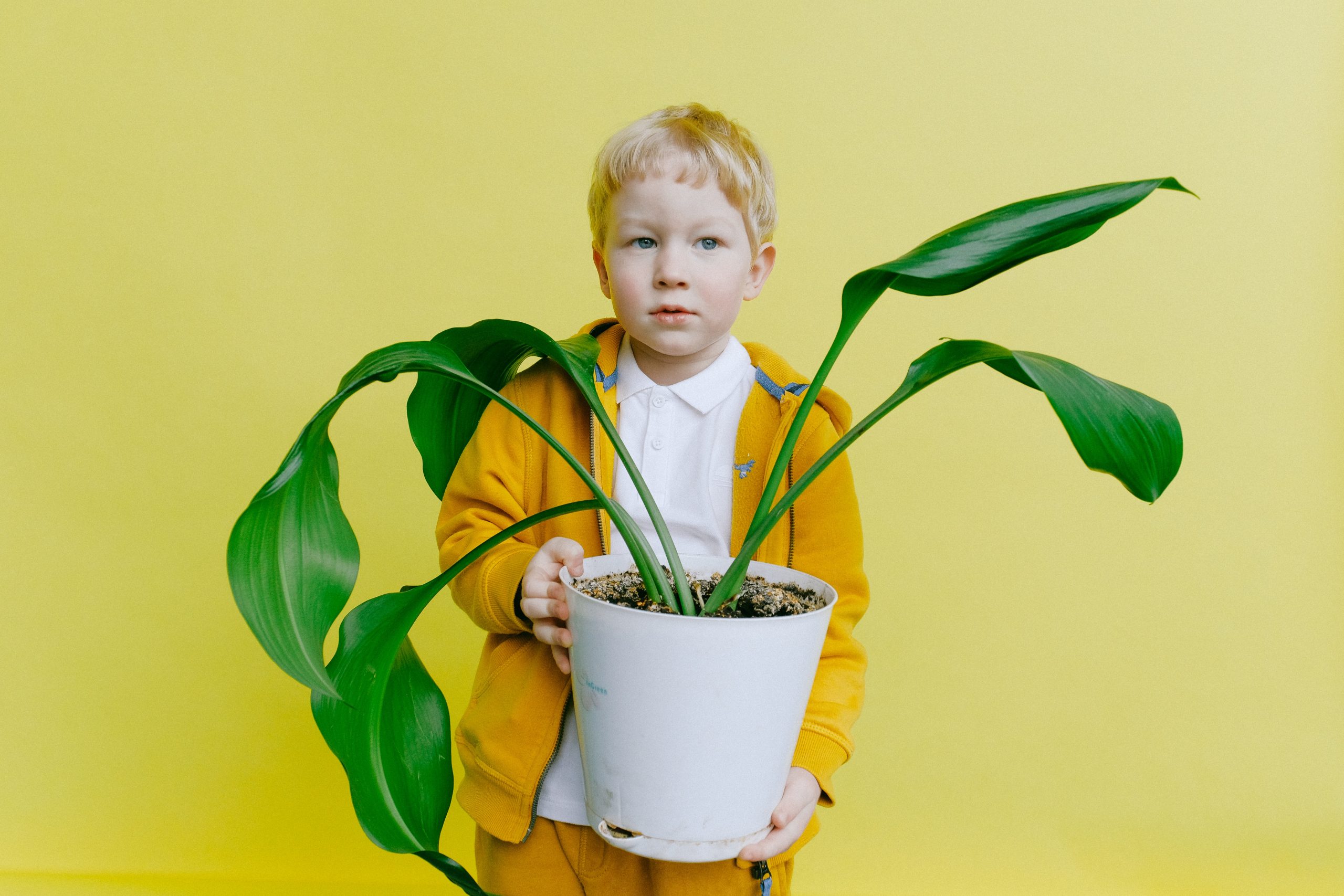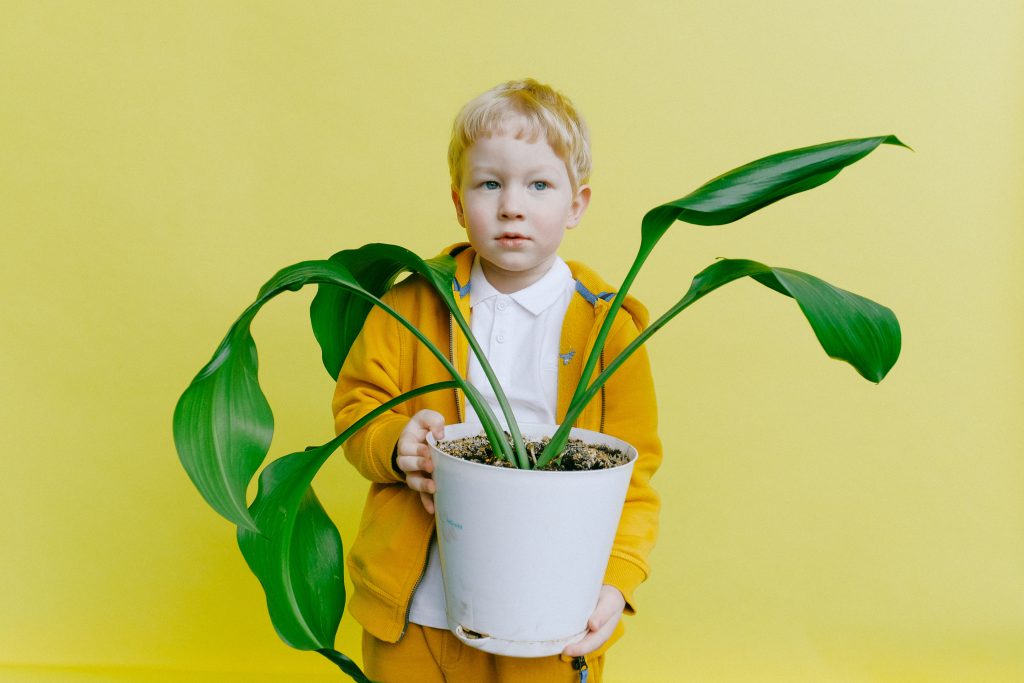
Our horticultural technicians at Good Earth Plant Company are smarter than a fifth-grader when it comes to taking care of plants. Photo: Anna Shvets
Call us biased, but we believe the best horticultural technicians (friendly, reliable, and knowledgeable) anywhere in the world work at Good Earth Plant Company. We have the results – and the glowing client reviews – to prove it!
Many of our reviews compliment our horticultural technicians’ ability to keep our clients’ plants looking healthy and beautiful. Many times we help our clients with advice on how to take care of their plants at home.
They are so good, I decided to turn the blog over to them this week. I asked them for the best plant care tip they have learned while working for Good Earth Plant Company. We’re sharing these tips with you.
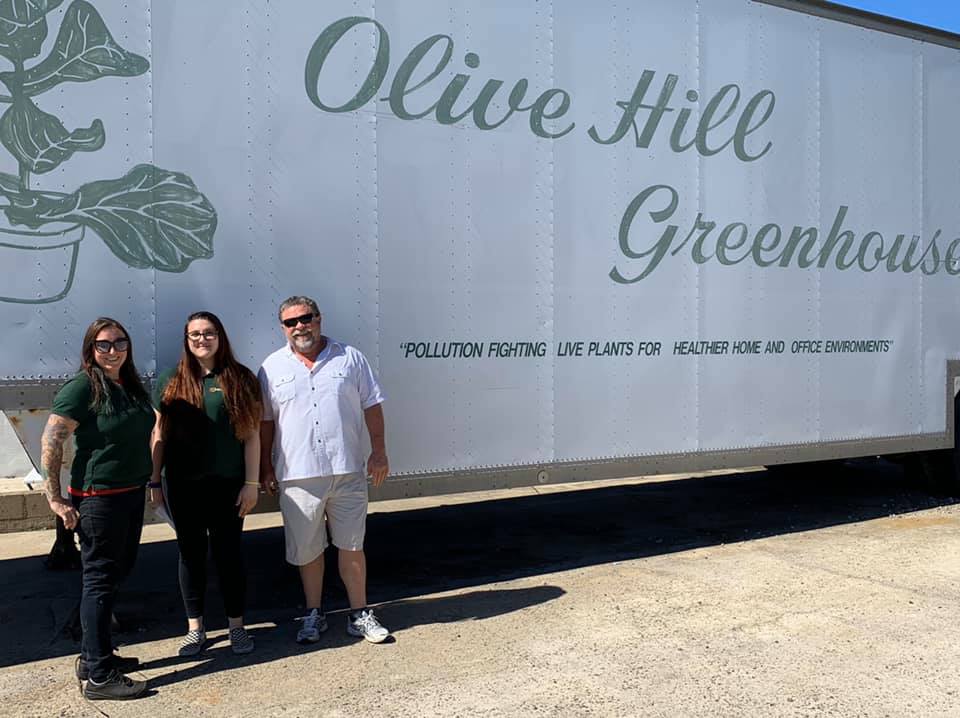
Rachel Heckathorn, Cassidy Braddy, and I on our recent field trip to North County nurseries.
Rachel: “A clean plant is a happy plant! Removing dust off plant leaves helps them take in more light. Removing any little crunchy parts helps prevent pests. This is what the buggies like.”
Indoor plants often struggle to get enough sunlight to allow them to grow and thrive. So don’t make it harder for them by letting them get dirty.
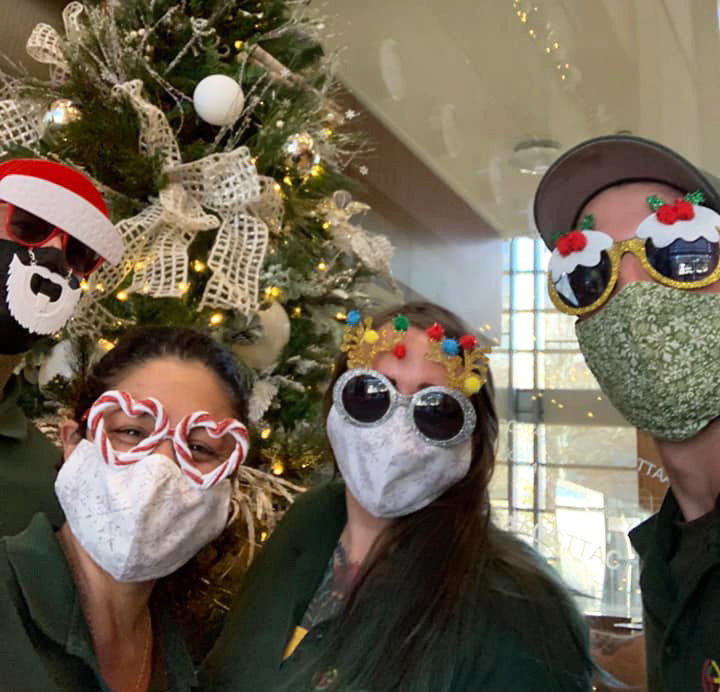
(L to R) Scott, Lisa, Rachel, and Joe hard at work on a client’s holiday display this year.
Joe: “I was unaware leaf shine can help get rid of mealy bugs.”
We don’t use pesticides – we clean our plants. If the pests happened to die from cleaning, oh well! While we generally don’t recommend using leaf shine on healthy plants, washing foliage regularly with a leaf shine made from neem oil will help discourage mealy bug and other pest infestations without using pesticides. For really tough infestations, Safer® Insecticidal Soap will work fast on heavy infestations. Or call us – we have several non-toxic tricks up our sleeves.
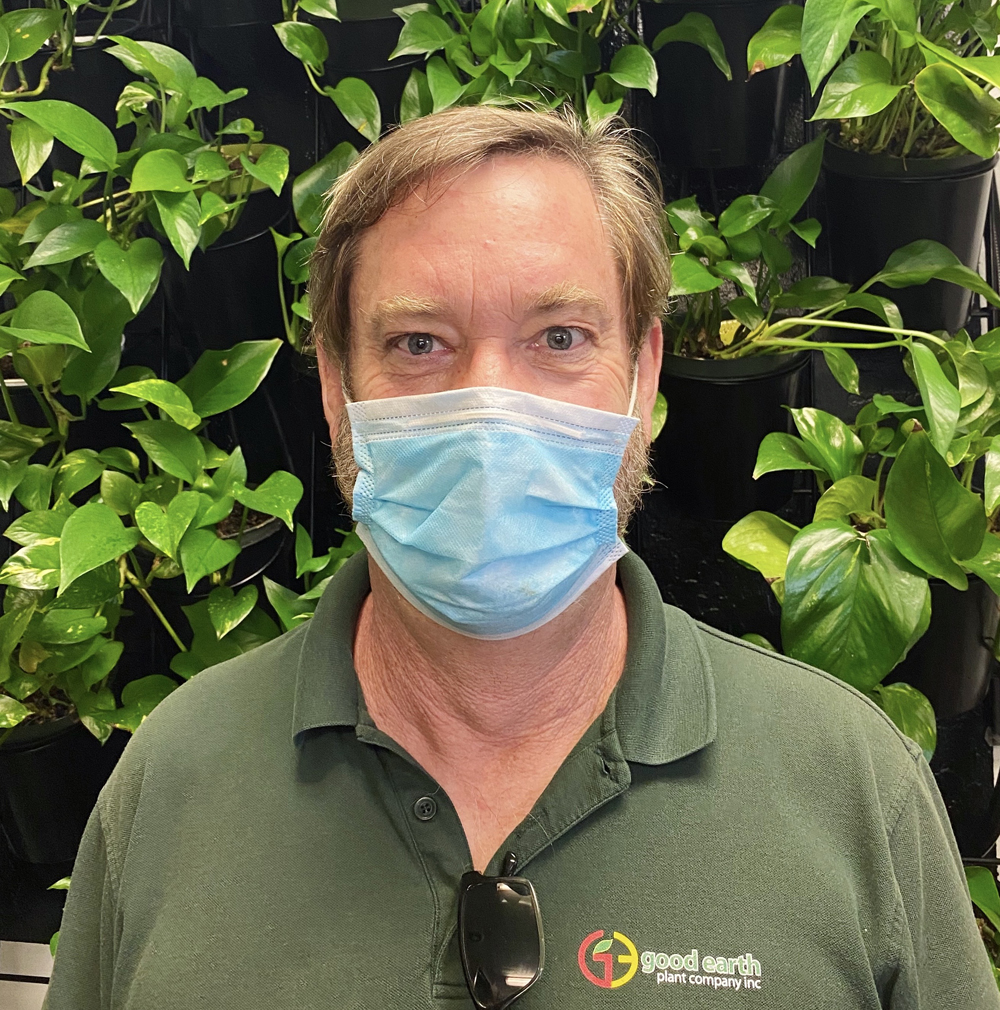
Horticultural Technician Scott Rodgers.
Scott: “Despite the smell, fish emulsion will revive older outdoor plants.”
What is fish emulsion? It is a type of liquid organic fertilizer made from whole fish and fishing industry byproducts. It provides a quick boost of nitrogen. You can spray it on leaves or add it to the soil every three to four weeks from spring to early autumn. The smell fades away after a day. Just don’t use it right before having a backyard BBQ. You can also make your own fish emulsion from higher quality parts if you’re really motivated. Here’s how to do it.
Cassidy: “Plants need to be fertilized at certain times of the year.”
Yes they do! We could write a whole blog post just about fertilizer for your indoor plants (and maybe we will closer to spring 2021). It’s easy to blow this off. But you need to feed your indoor plants to help them grow healthy and strong. Beware of using too much fertilizer or thinking it will fix a problem. Outside in the ground, Mother Nature provides plenty of nutrients. Inside, your indoor plants are counting on YOU.
When you first buy new indoor plants, there are nutrients in the potting soil to last months. We fertilize indoors only 3-4 times per year, but outside potted plants get fed every other week. Indoors, it all depends on how much light the plant is receiving. But you need to stop feeding plants in the winter months – they “hibernate” and rest in cooler weather. So mark your calendar around March 1 and start feeding them again.
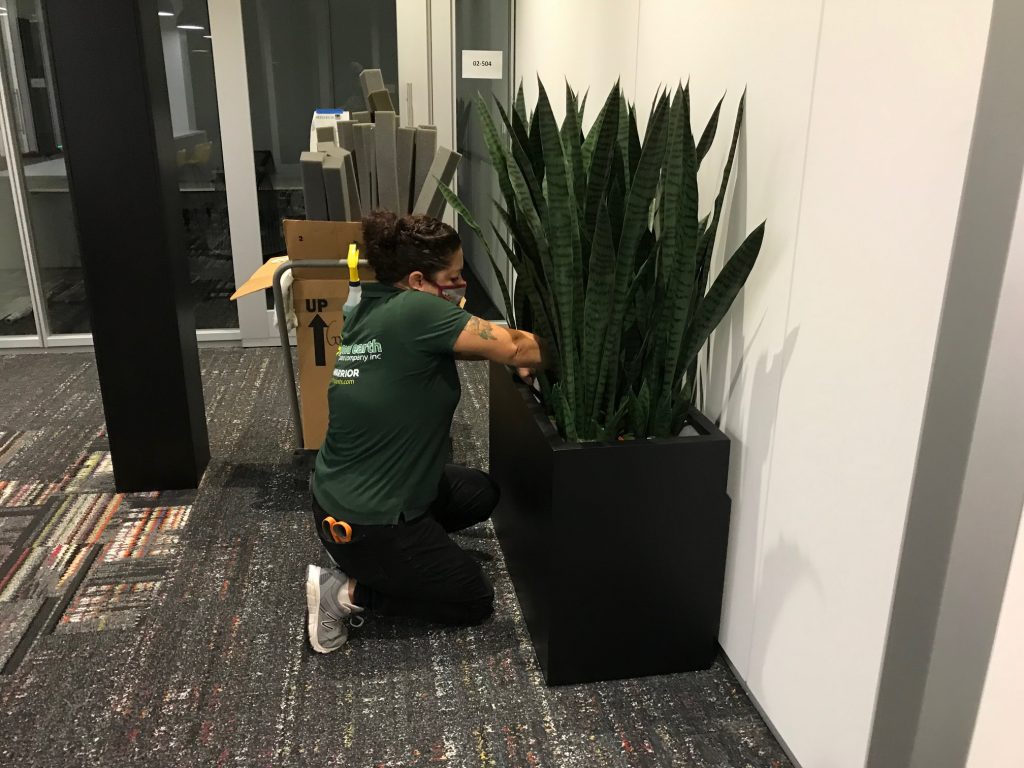
Our horticultural technician Lisa Oliver installs a living (not replica) Sanseveria.
Lisa: “Before working at Good Earth Plants, I never knew that plants go dormant in the wintertime and go “to sleep,” which requires less water and fertilizer. Honestly, I couldn’t care for a plant to save my life in my younger days.”
We love Lisa’s honesty! We believe anyone who’s really motivated can learn the skills to care for indoor plants, although it’s true some people seem to have a talent for it. Keep in mind – plants want to live! They will do almost anything (short of running away from home) they can to survive.
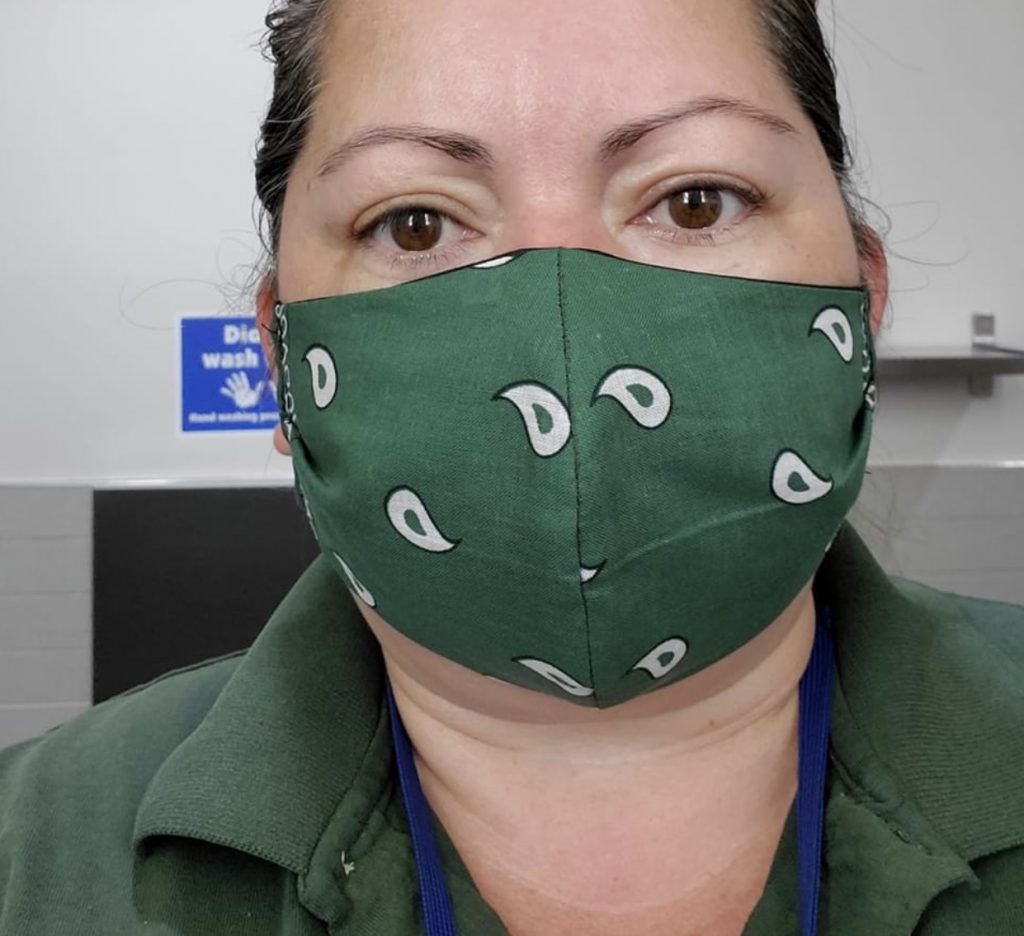
Horticultural technician Sophie Gonzalez hard at work wearing the new custom mask she designed for us!
Sophie: “After a year, plants need soil added to them every few months.”
As a plant grows, it uses up soil. It’s similar to adding fertilizer. If your plants are growing and your potting mix looks good, there’s no real reason for completely replacing the potting soil. But plants like to have potting soil refreshed with fresh, healthy materials. Unless there’s a reason to completely replant (like pests), add a little soil to the top – just not too deep. If a plant is ancient and still in the same pot, remove compacted clumps and add a little perlite to help the plant’s roots breathe.
Don’t waste the old soil. Add it to your outdoor garden.
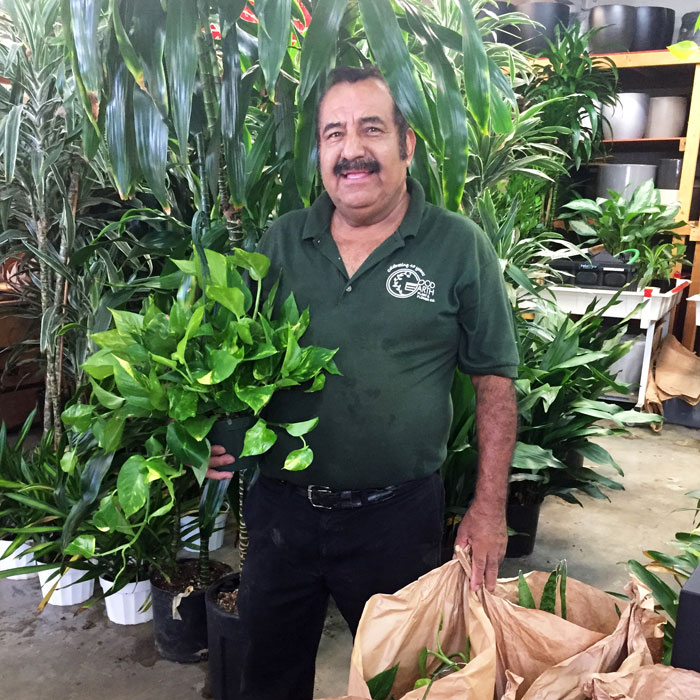
Celso Gomez is dedicated to keeping our clients and their plants healthy and thriving!
Celso: “Top water the first time you put a plant in a sub-irrigation system. After this, water into the irrigation tube only.”
We wrote a blog post about sub-irrigation systems a few months back. Celso is one of our most senior technicians, and he doesn’t make the plants go “cold turkey” without surface water right away. It takes a few weeks for the roots to grow into some of the sub-irrigation systems. And once you are using the system exclusively, don’t top water. Many of the salts in our water or fertilizers will rise to the top of the soil and you want to remove them, not water them back into the soil Smart!
Shayla: “You can most likely bring a plant back to life from under watering, but not from overwatering.”
True! More plants are killed with kindness by new owners who think if a little water is good, a lot is better. Roots breathe. If you water to the point of drowning – they rot. And then the plant is most likely done. It’s like salt on your French fries. A little is delicious. Dumping the whole shaker on them ruins them. More watering advice here.
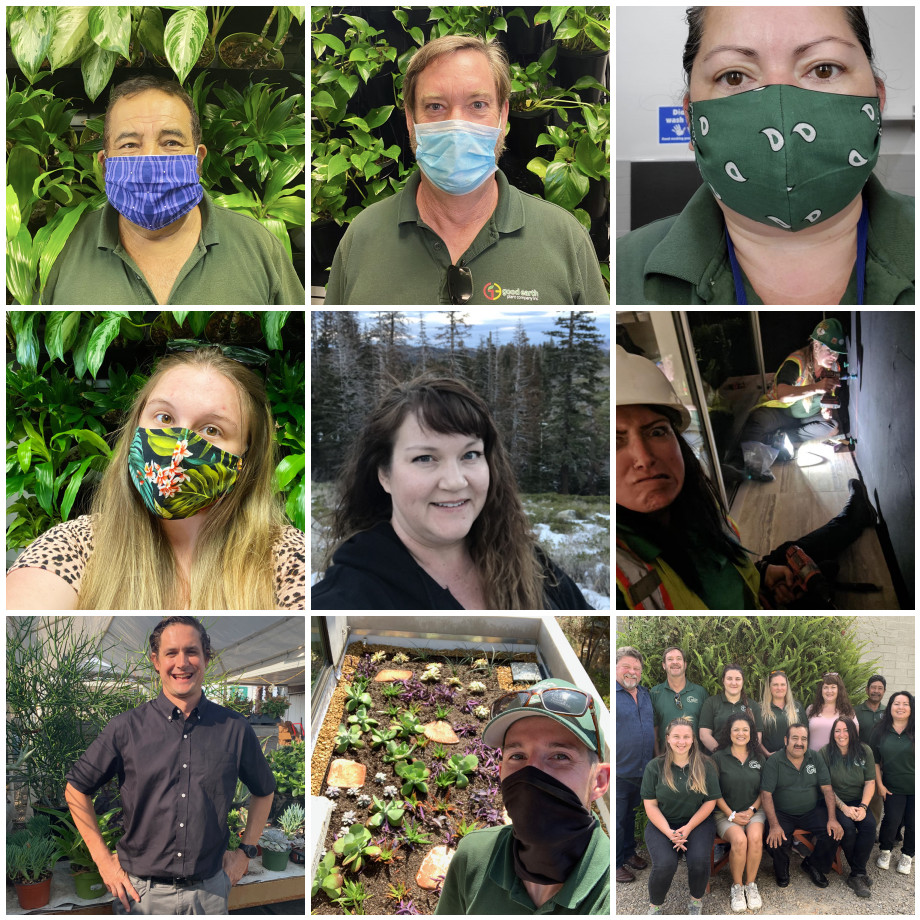
Our work family – we couldn’t do it without ALL of you!
Erin: “I learned that staging my house plants the way we stage our clients’ plants (kept in a grow pot inside a decorative planter) makes it easier for me to water them. I can easily switch them out to a different location if they aren’t doing well or if I want a different look.”
Joel: “Kentia Palms, fishtail palms, and ficus trees can’t grow in low light.”
Indoor plants need light. They get far less light indoors, so it’s important to find the right exposure. Most palms like medium to bright light. The same is true for ficus, but even more light. A Ficus benjamina and fiddle leaf fig really need some direct sun. Otherwise, the leaves will drop off as the plant tries to survive and cannot support itself. Without enough light, it gets rid of leaves it can’t feed. You’re starving it to death!
Dan: “Before working here, I never knew that indoor plants need to be rotated sometimes.”
Plants are “phototropic” – they turn towards the light. Have you ever noticed an indoor plant starting to lean in one direction – usually toward a window? They’re growing toward the light source! Rotate them to prevent this, and provide all of the leaves enough light exposure.
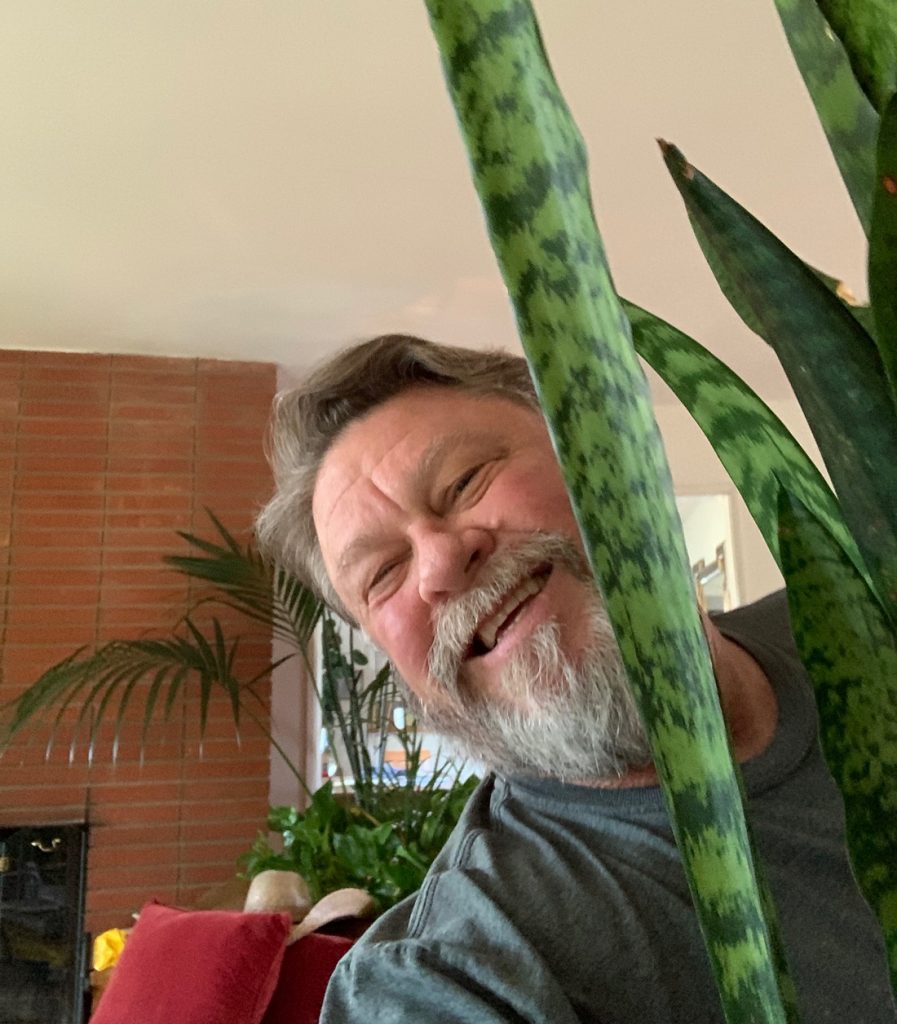
My home benefits from the oxygen and humidity added to the air by my dozens of indoor plants. Photo: Jim Mumford
Jim: “New indoor plants need more water than older indoor plants.”
Adding one tip of my own to this excellent list. It’s true because they have usually come from an ideal habitat in a greenhouse receiving lots of water. You need to wean them off all that irrigation in your home. Plus, older plants have developed a more established root system. When a plant has more roots inside the container, it has more root surface like the face of a sponge to draw in more of the water you add to the soil. New plants with just a few roots can’t work hard enough to take as much water. So adjust your plant’s watering needs as it grows.
Now you know why our clients rely on their favorite Good Earth Plant Company experts to take care of their plants. Could you use their help? Get in touch with us – we LOVE to enrich your life with healthy, happy plants! Email us at info@ goodearthplants.com to get started.

